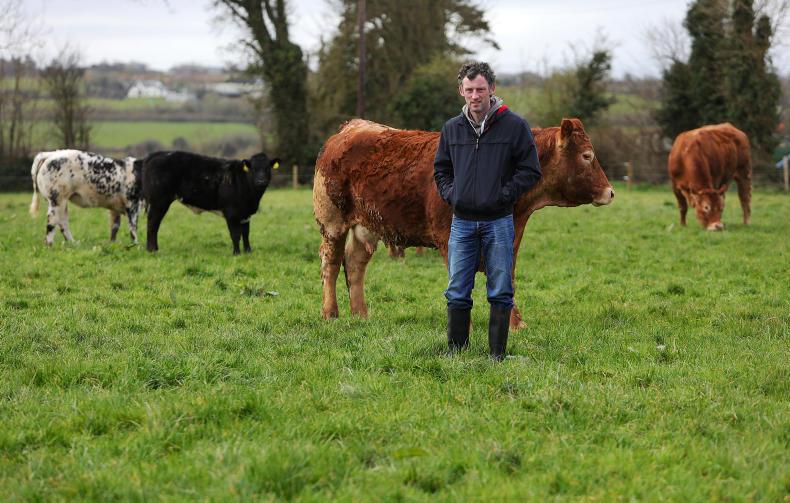Simplicity is the name of the game for suckler-to-weanling farmer Michael Reynolds. He’s keen on a streamlined system, he likes to keep his costs to a minimum and he wants every animal on the farm to be making money for him.
“I’m limited with my land base here, so I have to maximise productivity from every acre of ground that I have,” he says.
Michael is running a herd of 50 suckler cows on 65ac in Gortatlea, Co Kerry. He calves the cows in April and May and sells the calves in March and April at 10 to 11 months of age in Gortatlea Mart. The majority will go for export.
Trading troubles
Even after learning briefly about Michael’s system, it won’t come as a surprise that he is concerned about the problems surrounding mart trading as a result of the coronavirus pandemic.
“I just don’t know what way it’ll go,” he says. “I’ve 25 weanlings ready to go in the shed at the minute. I’ll hold them for a week or two and see what happens, but after that I’ll have to talk to the mart manager and see what we can do. It might mean getting a customer into the yard to buy them. Who knows?”
They are eating into silage that he would have liked to have in the yard for next autumn and winter
But holding cattle has its own problems too. For a start, Michael is concerned they could go too heavy for shipping.
On top of that, they are eating into silage that he would have liked to have in the yard for next autumn and winter.
Finally, Michael is also close to breaching the nitrates limits with a high stocking rate on the farm as things stand, so he will have to re-calculate his nitrates to see what he can carry for the year ahead if he does end up keeping cattle for a month extra than planned.
“At the end of the day, I’ve brought them this far and I want to try get them into a decent weight and get a fair price for my work,” he concludes.
To learn more about breeding and producing weanlings for export on Michael’s farm, read the full story in this week’s Irish Farmers Journal.






 This is a subscriber-only article
This is a subscriber-only article









SHARING OPTIONS: